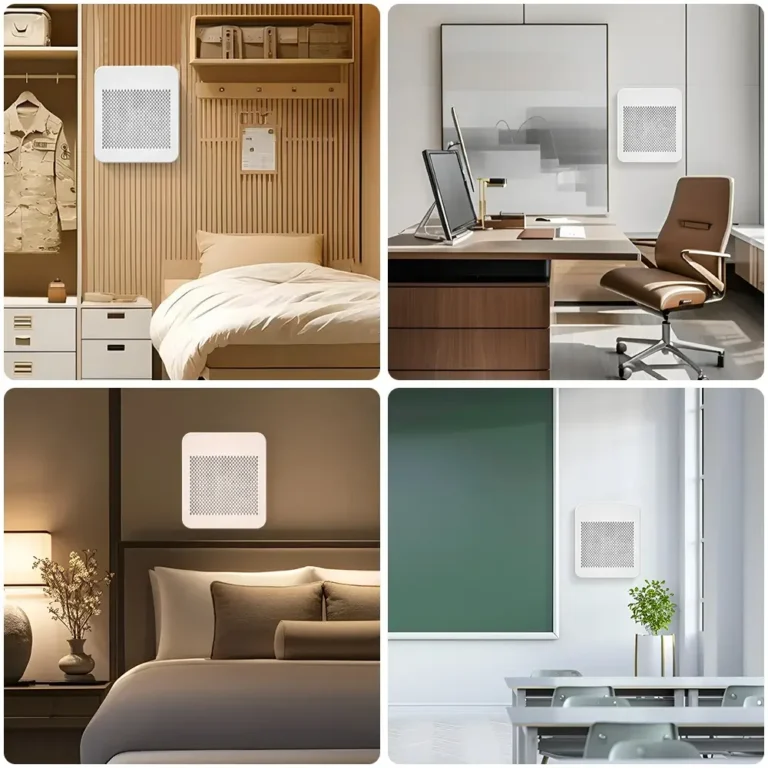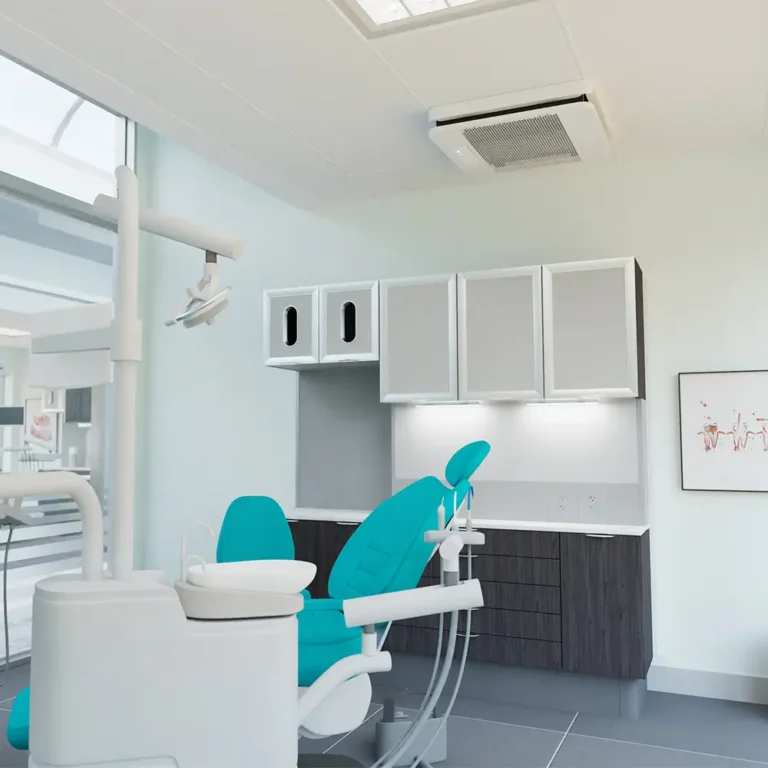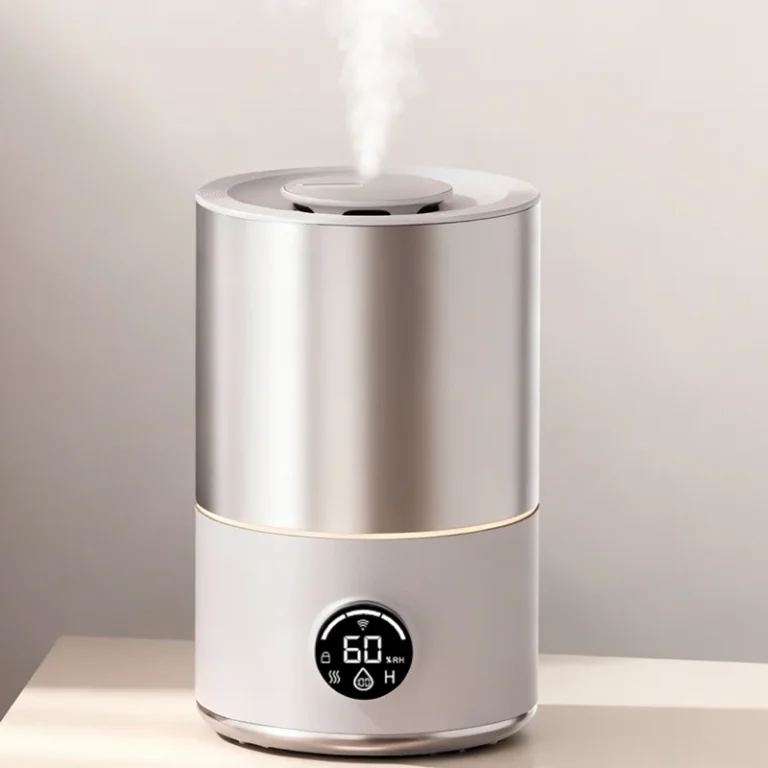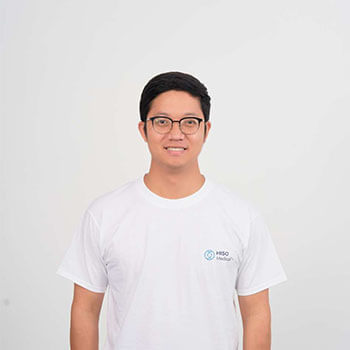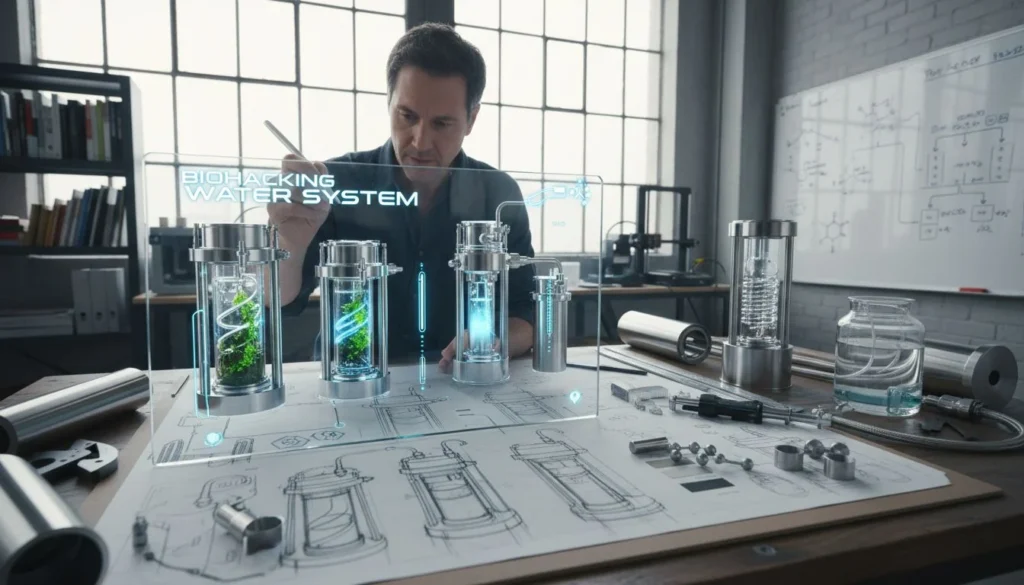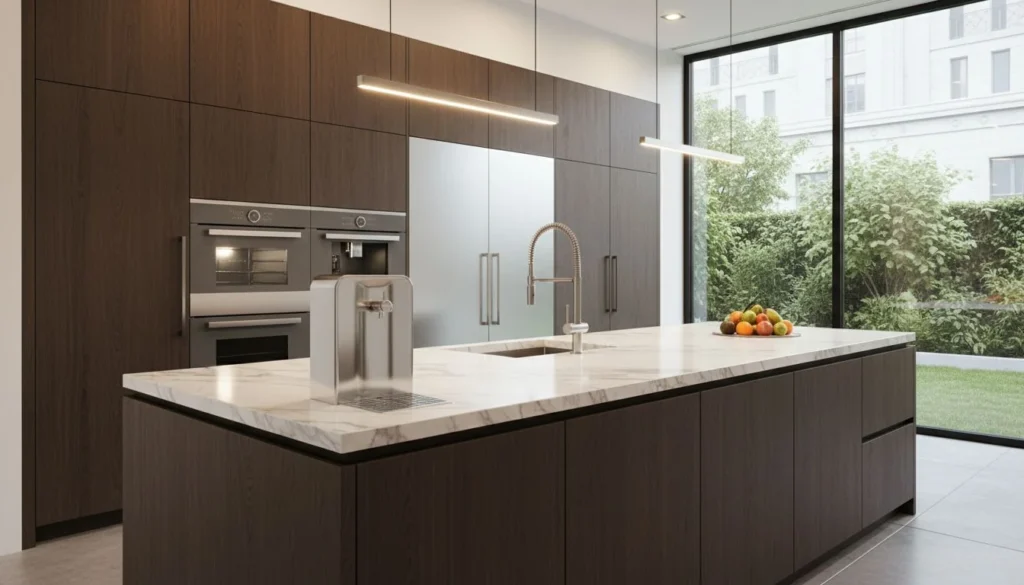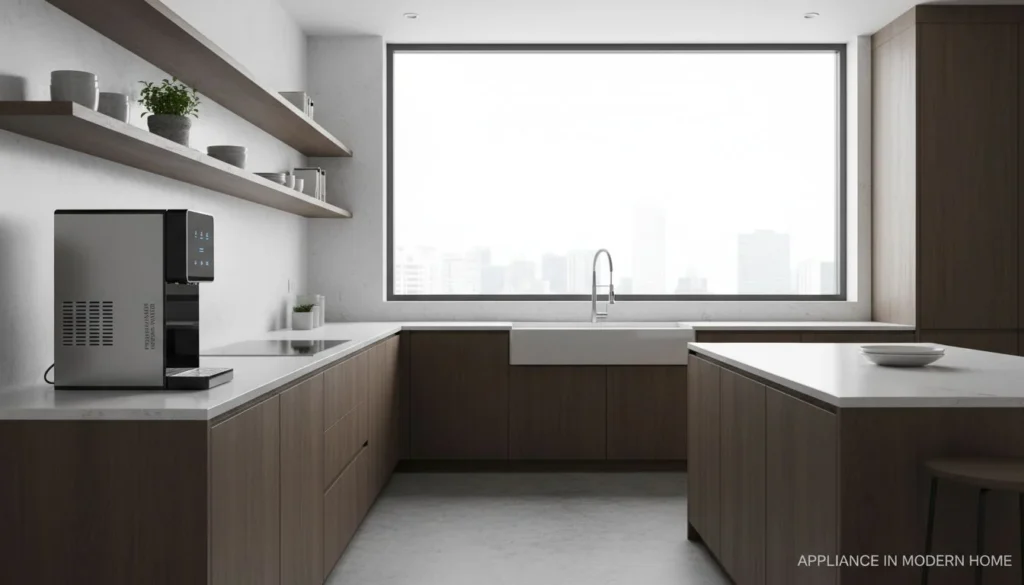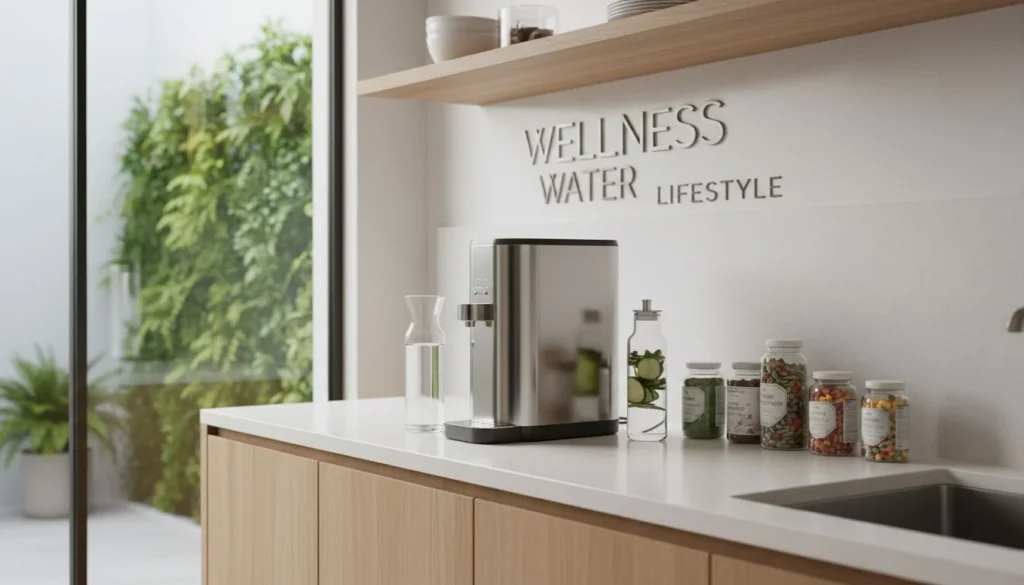Have you ever wondered how artificial intelligence will transform the way we breathe indoors? As the founder of HisoAir with over 20 years in the air quality industry, I'd like to share my insights on this exciting future.
En humidificador y purificador de aire industry is rapidly evolving with AI integration, transforming these devices from simple home appliances into intelligent wellness systems1. With Matter protocol adoption, enhanced connectivity, and personalized air quality management, these smart devices will soon form an integral part of our health ecosystem rather than just serving basic functions.

Understanding this transformation requires looking beyond current technology. Imagine your air purifier not just cleaning air but actively contributing to your overall wellness journey! It's like when I first connected my smart thermostat to my home system - suddenly, temperature control became just one aspect of a comprehensive home environment management solution. Let me guide you through how AI is revolutionizing the way we think about indoor air quality.
How Will AI Transform Air Purifiers and Humidifiers from Appliances to Wellness Systems?
The transformation is already underway. Traditional appliances are evolving. Intelligence is being embedded. Wellness is becoming the focus.
AI will transform air purifiers and humidifiers by enabling predictive maintenance, personalized settings based on individual health profiles, integration with broader wellness ecosystems, and autonomous operation that responds to changing environmental conditions without user intervention.
From Simple Devices to Intelligent Systems
In my two decades of experience in the air quality industry, I've witnessed a remarkable evolution. The transformation of purificadores de aire and humidifiers mirrors the smartphone revolution. Just as phones evolved from communication tools to life management hubs, air quality devices2 are transforming from simple appliances into comprehensive wellness solutions. This shift represents a fundamental change in how we perceive these products.
In the AI era, I believe these devices will leverage advanced algorithms to understand patterns in air quality, user behavior, and environmental conditions. This intelligence allows them to operate proactively rather than reactively, addressing air quality issues before they impact health and comfort.
Predictive Maintenance and Optimization
Through my work at HisoAir, I've seen how AI brings unprecedented efficiency to air quality management. Modern systems can predict when filters need replacement based on actual usage patterns rather than arbitrary timelines. This mantenimiento predictivo3 approach optimizes performance while reducing waste and unnecessary costs.
Comparison of Traditional vs. AI-Enabled Maintenance:
| Característica | Enfoque tradicional | AI-Enabled Approach |
|---|---|---|
| Sustitución del filtro | Fixed schedule (e.g., every 3 months) | Based on actual air quality, usage patterns, and filter condition |
| Consumo de energía | Constant or manual adjustment | Optimized based on air quality needs and energy efficiency |
| Performance Monitoring | Manual checks or basic indicators | Continuous monitoring with predictive analytics |
| Alertas de mantenimiento | Calendar-based | Need-based with advance notification |
Integration with Health Ecosystems
From my perspective as an industry leader, the future of air quality devices lies in their integration with broader health monitoring systems. Imagine your air purifier communicating with your fitness tracker, adjusting settings based on your respiratory patterns during sleep or exercise. This interconnected approach transforms these devices from isolated appliances to integral components of a comprehensive wellness system4.
In our experience at HisoAir, I've observed that consumers increasingly view air quality not as a standalone concern but as part of their overall wellness journey. This shift in perspective is driving our innovation toward more integrated, intelligent solutions.
Autonomous Operation and Adaptation
The most exciting development I'm witnessing is perhaps the move toward truly autonomous operation. Future air purifiers and humidifiers will adapt to changing conditions without user intervention, learning from patterns and preferences to create optimal environments automatically.
This autonomous capability represents the culmination of AI integration, where devices not only respond to commands but anticipate needs based on learned behaviors and environmental factors. The result is a seamless experience where optimal air quality becomes effortless.
Understanding these transformations shows why I believe the future of air purifiers and humidifiers extends far beyond their traditional roles. By embracing AI capabilities, these devices are becoming active contributors to our health and well-being rather than passive appliances.

What Role Will Matter Protocol Play in the Future of Smart Air Quality Devices?
Have you considered how fragmented smart home ecosystems limit the potential of your devices? Let me show you how a unified standard is changing everything. The Matter protocol is revolutionizing connectivity in ways that will transform your experience with air quality products.
Matter protocol will standardize smart air quality device connectivity, enabling seamless integration across platforms like Apple HomeKit, Google Home, and Amazon Alexa. This universal compatibility will accelerate adoption, simplify user experience, and create a truly interconnected ecosystem where air purifiers and humidifiers can communicate with other wellness devices regardless of brand.
Universal Connectivity Standard
When I first explored the world of smart home technology for our HisoAir products, the fragmentation was frustrating. Different devices required different apps and hubs, creating a disjointed experience for our customers. The Protocolo de materias5 changes this paradigm by establishing a universal standard that works across platforms.
For our air purifiers and humidifiers, Matter certification means these devices can seamlessly connect to any compatible smart home system, whether you use Apple HomeKit, Google Home, Amazon Alexa, or Samsung SmartThings. This interoperability eliminates the "walled garden" approach that has limited innovation and user experience.
| Plataforma | Pre-Matter Integration | With Matter Protocol |
|---|---|---|
| Apple HomeKit | Limited device selection, proprietary certification | Universal compatibility with all Matter-certified devices |
| Google Home | Platform-specific integration | Seamless connection without additional setup |
| Amazon Alexa | Skill-based connectivity | Native support for all Matter devices |
| Samsung SmartThings | Brand-specific partnerships | Open ecosystem with standardized controls |
Accelerated Market Adoption
Based on my industry experience, I believe the standardization brought by Matter will significantly accelerate market adoption of smart air quality devices. By removing compatibility concerns, consumers can confidently invest in these products knowing they'll work with their existing systems and future purchases.
In the next three years, I anticipate a surge in Matter-certified air purifiers and humidifiers. This standardization will create a more cohesive smart home experience where different branded products can connect together and generate valuable data points across major platforms.
Enhanced Data Sharing and Functionality
Perhaps the most significant impact of Matter that I foresee will be in enabling enhanced data sharing between devices. When your air purifier can communicate effectively with other smart home systems, it creates opportunities for more sophisticated automation and insights.
For example, a Matter-enabled air purifier could receive information from door/window sensors to adjust operation when fresh air is entering the home, or coordinate with HVAC systems to optimize overall air quality and energy efficiency. This level of intelligent coordination6 between devices represents the next frontier in smart home technology.
Overcoming Implementation Challenges
While Matter promises significant benefits, I recognize that implementation challenges remain. Device manufacturers must update hardware and firmware to support the protocol, and existing devices may require bridges or new models to become compatible.
Additionally, I must acknowledge that the conflict between China and US could potentially delay this great process toward a smart world and home reality. Since China has the largest supply chain and manufacturers for these hardware products, while the US leads the consumer market for innovation, tariffs and political conflicts may slow down the AIOT era.
Despite these challenges, the momentum behind Matter suggests it will play a central role in shaping the future of smart air quality devices, creating a more integrated, user-friendly ecosystem that enhances the value proposition of these products.
How Will Data Collection and Personalization Change the User Experience?
Data drives personalization. AI enables insights. User experiences transform. The future is tailored to you.
In the AI era, air purifiers and humidifiers will collect comprehensive data on air quality, usage patterns, and environmental conditions to deliver highly personalized experiences. These devices will function as AI agents, learning user preferences and health needs to automatically adjust settings, provide actionable insights, and integrate with personal health monitoring systems.
The Power of Personalized Air Quality Management
Through my years developing air quality solutions at HisoAir, I've come to understand that the one-size-fits-all approach to air quality is becoming obsolete. Future devices will recognize that each user has unique needs based on their health profile, sensitivities, and preferences. By collecting and analyzing data, these systems can create truly personalized experiences that maximize comfort and health benefits.
As I've observed in my work with air quality solutions, the most effective systems are those that adapt to individual needs. Sensores inteligentes7 in modern devices can detect specific pollutants and adjust filtration accordingly, creating a tailored approach to air purification.
From Data Collection to Actionable Insights
The value of data lies not just in collection but in transformation into actionable insights. In my experience developing AI-powered air quality devices, I've seen how they analyze patterns to provide recommendations that improve both device performance and user health.
Data Collection and Analysis Capabilities:
| Data Type | Collection Method | AI-Driven Insights |
|---|---|---|
| Particulate Matter (PM2.5, PM10) | Laser particle sensors | Correlation with outdoor pollution events, indoor activities |
| Compuestos orgánicos volátiles (COV) | Gas sensors | Identification of pollution sources, remediation recommendations |
| Temperature & Humidity | Environmental sensors | Optimal comfort settings, mold prevention strategies |
| Usage Patterns | Operation logs | Energy efficiency recommendations, filter life optimization |
| User Preferences | App interactions | Personalized automation routines, setting preferences |
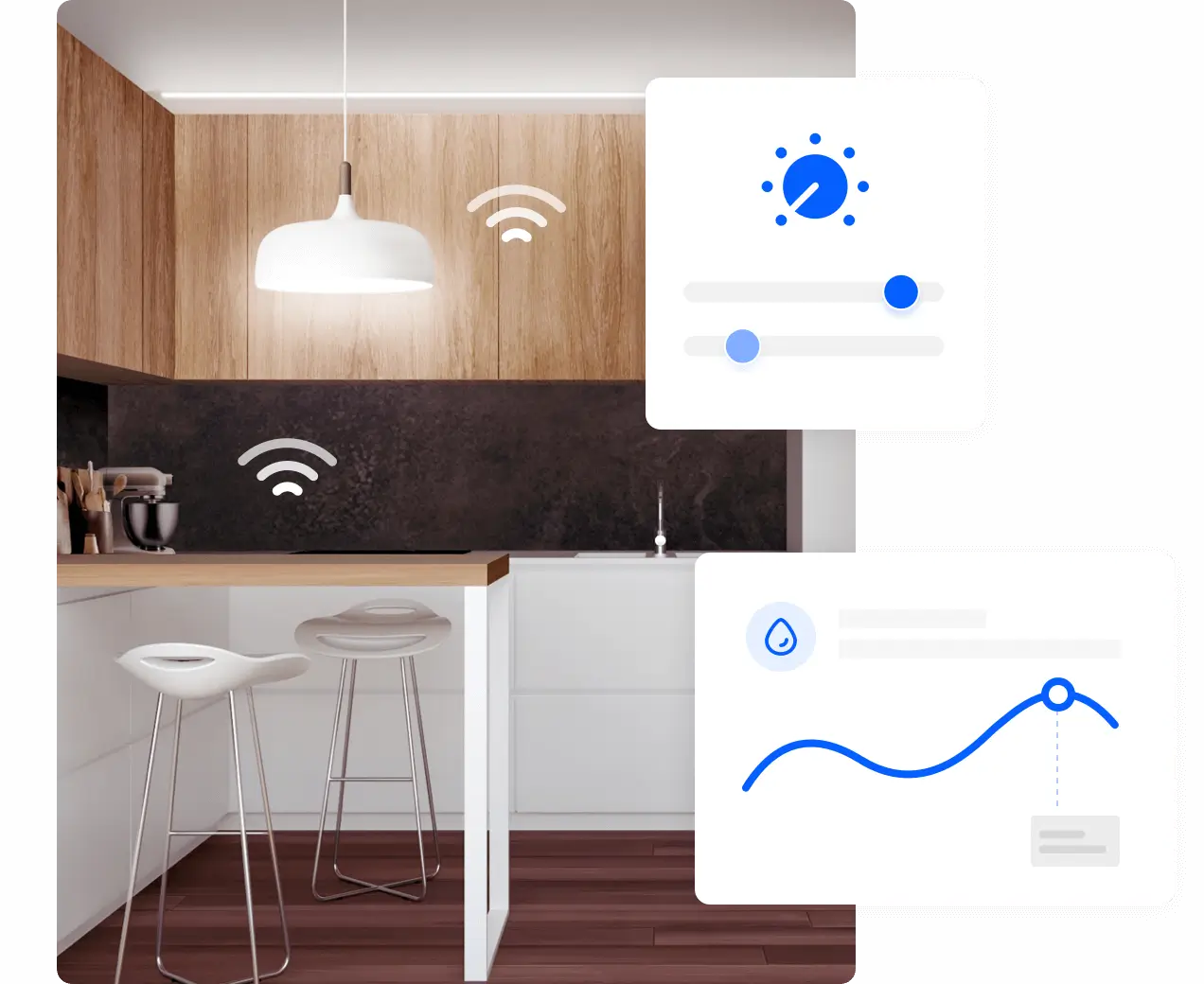
Privacy and Security Considerations
As devices collect more personal data, I believe privacy and security become paramount concerns. Future air quality systems must balance personalization with robust data protection measures to maintain user trust.
At HisoAir, we believe that while data collection enables powerful personalization, users must maintain control over their information. Transparent data policies and strong security measures are essential components of our product development philosophy.
The Evolution of User Interfaces
As devices become more intelligent, I've been working to ensure user interfaces evolve to simplify interaction while providing deeper insights. Voice control, automated settings, and intuitive visualizations will replace complex manual adjustments, making advanced air quality management accessible to all users.
This evolution represents a fundamental shift in how we interact with these devices. Rather than requiring technical knowledge to operate effectively, AI-powered interfaces8 will make sophisticated air quality management intuitive and effortless.
Understanding these developments reveals how data collection and AI analysis will transform the user experience from one of manual management to effortless personalization, where devices anticipate needs and adapt automatically to changing conditions.
What Global Supply Chain Challenges Could Impact Industry Innovation?
Global tensions create uncertainty. Supply chains face disruption. Innovation requires adaptation. How will the industry respond?
Global supply chain challenges, particularly US-China tensions, could significantly impact innovation in the air purifier and humidificador industry. With China dominating hardware manufacturing and the US leading in consumer technology, tariffs and trade restrictions may slow AIOT adoption, increase costs, and delay the integration of advanced features in next-generation devices.
The Impact of Geopolitical Tensions
As someone who manages manufacturing facilities across multiple countries, I've experienced firsthand how the air purifier and humidifier industry, like many technology sectors, relies on global supply chains that are increasingly affected by geopolitical tensions. The relationship between manufacturing hubs in Asia and consumer markets in North America and Europe is particularly vulnerable to trade disputes and policy changes.
Because of the conflict between China and US, the great process toward a smart world and home reality will possibly delay. Since China has the largest supply chain and manufacturers for these hardware products, and US are leading the consumer market for innovation, tariffs and political conflicts may slow down the AIOT era.
This observation is based on my direct experience navigating the complexities of international trade while trying to bring innovative global trade policies9 can directly impact the pace of innovation and adoption of new technologies in the air quality industry.
Diversification of Manufacturing Bases
In response to these challenges, at HisoAir, I've implemented a strategy of diversifying our manufacturing bases beyond China. This approach aims to mitigate risks associated with tariffs and trade restrictions while maintaining competitive pricing and quality standards.
Our company exemplifies this approach with factories in China, Vietnam, and Thailand, creating a resilient supply chain that can adapt to changing global conditions. This diversification strategy is something I recommend to other forward-thinking manufacturers in the industry.
Regional Manufacturing Comparison:
| Región | Ventajas | Desafíos |
|---|---|---|
| China | Established infrastructure, component ecosystem, technical expertise | Rising labor costs, trade tensions, tariffs |
| Vietnam | Lower labor costs, growing technical capabilities, favorable trade status | Less developed component ecosystem, infrastructure limitations |
| Tailandia | Strategic location, stable business environment, growing expertise | Higher costs than some alternatives, smaller skilled labor pool |
| México | Proximity to US market, USMCA benefits, reduced shipping times | Security concerns, infrastructure limitations in some regions |
Component Shortages and Innovation Delays
The semiconductor shortage that began in 2020 continues to impact various industries, including our smart home devices. I've seen how advanced air purifiers and humidifiers rely on microchips for their smart features, and shortages can delay product launches and limit availability.
These component challenges may slow the integration of advanced features like AI processing, sophisticated sensors, and connectivity options in next-generation devices. As a manufacturer, I must balance innovation ambitions with practical supply chain realities.
Rising Costs and Market Segmentation
In my experience, supply chain disruptions typically lead to increased costs, which can affect market dynamics in several ways. Higher-end products with advanced features may become more expensive, potentially limiting mass-market adoption of the most innovative technologies.
This cost pressure could lead to greater market segmentation, with basic models remaining affordable while advanced AI-enabled devices command premium prices. This segmentation may slow the overall transition to smart, connected air quality solutions.
Despite these challenges, I remain committed to innovation and adaptation. Companies that successfully navigate supply chain complexities while maintaining a focus on technological advancement will be well-positioned to lead in the evolving market for air quality solutions.
How Is HisoAir Preparing for the AI-Driven Future of Air Quality Solutions?
Innovation requires vision. Adaptation demands strategy. Leadership means anticipating change. Let me share how I'm positioning HisoAir for the future.
HisoAir is actively preparing for the AI-driven future by developing 2-in-1 combo devices that function as comprehensive wellness systems rather than simple appliances. The company is investing in Matter certification, expanding manufacturing across multiple countries to mitigate supply chain risks, and focusing on creating products that leverage AI for personalized air quality management.
Embracing the Wellness System Paradigm
At HisoAir, I recognize that the future of air quality management extends beyond basic functionality to comprehensive wellness solutions. This vision is driving our product development strategy, particularly for combination devices that address multiple aspects of indoor air quality.
From HisoAir's perspective, our team is still keeping innovation and developing new air purifiers and humidifiers, especially 2-in-1 combo devices, as a wellness system rather than just home appliances products. We believe the AIOT will come, and we should follow up the trend.
This approach aligns with the broader industry shift toward integrated wellness solutions10 that consider the holistic impact of air quality on health and comfort.
Investing in Connectivity and Intelligence
Understanding the importance of interoperability in the smart home ecosystem, I'm actively working toward Matter certification for our product line. This investment ensures that future devices will seamlessly integrate with various smart home platforms, enhancing user experience and expanding market potential.
Our commitment to connectivity extends beyond basic smart features to true intelligence, where devices learn from usage patterns and environmental conditions to provide personalized experiences. This focus on AI-driven functionality positions HisoAir at the forefront of industry innovation.
Strategic Manufacturing Diversification
To address potential supply chain challenges, I've established manufacturing facilities across multiple countries, including China, Vietnam, and Thailand. This diversification strategy provides resilience against geopolitical tensions and trade disruptions while maintaining quality standards and competitive pricing.
HisoAir's Global Manufacturing Strategy:
| Ubicación | Strategic Advantage | Focus Areas |
|---|---|---|
| China | Technical expertise, component ecosystem | Advanced R&D, high-precision manufacturing |
| Vietnam | Cost efficiency, US market access | Volume production, US-bound products |
| Tailandia | Regional distribution, growing expertise | Southeast Asian market, specialized products |
Balancing Innovation with Practicality
While embracing advanced technologies, I maintain a focus on practical solutions that deliver tangible benefits to users. This balanced approach ensures that innovations serve real needs rather than simply adding complexity or cost.
We believe in innovation that improves lives. Our development process always begins with understanding user needs and then applying technology to address those needs effectively.
This user-centric philosophy guides HisoAir's approach to AI integration, ensuring that advanced features enhance rather than complicate the user experience. By focusing on meaningful innovations, I'm positioning our company to thrive in the evolving market for smart air quality solutions.
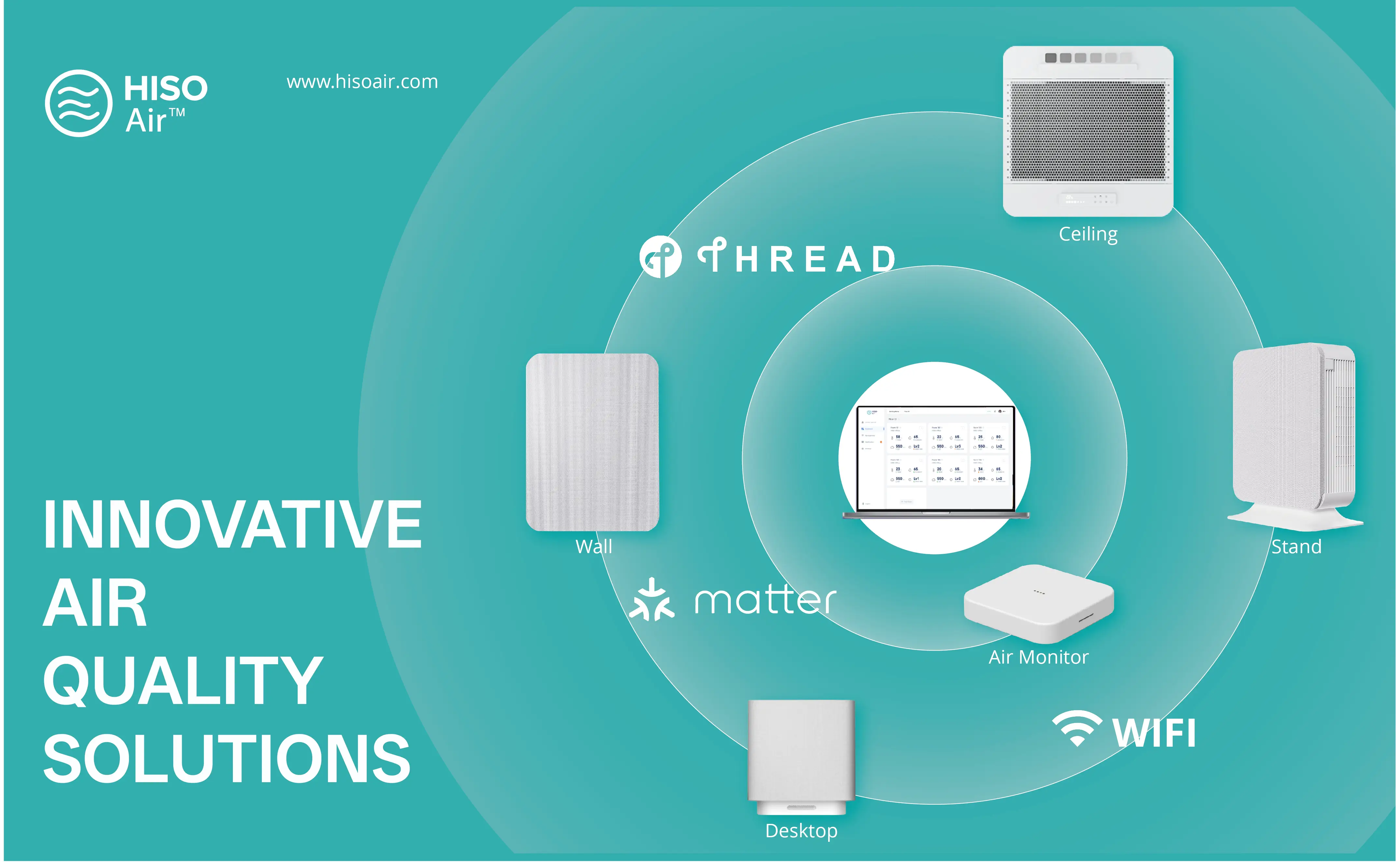
Conclusión
The future of the humidifier and purificador de aire industry in the AI era represents a profound transformation from basic appliances to sophisticated wellness systems. As I've explored throughout this article, this evolution encompasses several key dimensions:
-
Intelligence and Personalization: AI will enable devices to learn, adapt, and provide personalized experiences based on individual preferences and needs.
-
Connectivity and Integration: The Matter protocol will create a unified ecosystem where air quality devices communicate seamlessly with other smart home systems.
-
Información basada en datos: Advanced sensors and analytics will transform raw data into actionable insights that improve both device performance and user health.
-
Resistencia de la cadena de suministro: Companies will need to navigate geopolitical tensions and diversify manufacturing to ensure continued innovation and competitive pricing.
-
Wellness-Centered Design: The focus will shift from basic functionality to comprehensive solutions that contribute to overall health and well-being.
While challenges remain, particularly in terms of global supply chains and standardization, the trajectory is clear. The air purifier and humidifier industry is moving toward a future where these devices are not just appliances but integral components of our health ecosystem.
As the founder of HisoAir, I firmly believe that people and end-users don't just need home appliances but need good air quality for human breath and wellness. In the AI era, humidifiers and air purifiers will become part of wellness systems rather than just home appliances.
This vision encapsulates the industry's transformation from products that serve a single purpose to intelligent systems that actively contribute to our health, comfort, and well-being. Companies that embrace this paradigm shift, investing in AI capabilities, connectivity, and user-centered design, will lead the next generation of air quality solutions.
The journey toward fully AI-integrated air quality management may take years or even decades to complete, but the foundation is being laid today through innovations in connectivity, intelligence, and personalization. For consumers and businesses alike, this evolution promises a future where optimal air quality is not just a luxury but an effortless, integral part of healthy living spaces.
References
-
Learn about how the humidifier and air purifier industry is evolving with AI integration, where experts discuss how machine learning and AI are increasingly being used to optimize air purification, improving efficiency, and ensuring the right balance between performance and energy consumption. ↩
-
Discover how air quality devices are transforming from simple appliances into comprehensive wellness solutions, which explains how modern purifiers now come equipped with sensors that monitor air quality in real-time, adjusting their operation accordingly to maintain optimal conditions. ↩
-
Explore how predictive maintenance is revolutionizing air purifier efficiency, where industry experts discuss how smart, integrated devices utilizing IoT and AI enhance comfort, efficiency, and health in our living spaces through predictive maintenance and optimization. ↩
-
Learn about the integration of air purifiers with broader health monitoring systems, which details how IoT and AI are changing indoor air quality by using intelligent air cleaning systems that watch and adapt according to what people need. ↩
-
Understand the impact of the Matter protocol on smart home devices, which explains how air purifiers arrived with Matter 1.2 and are now supported by all major platforms, creating a unified ecosystem for smart home devices. ↩
-
Discover how intelligent coordination between devices represents the next frontier in smart home technology, which explains how Matter's universal protocol could unify air purifier integrations across platforms, offering streamlined control and enhanced user experiences. ↩
-
Learn about how smart sensors in modern devices can detect specific pollutants, which discusses the growing market for indoor air quality solutions driven by new product launches with advanced sensing capabilities. ↩
-
Explore how AI-powered interfaces are making sophisticated air quality management intuitive, which describes how Matter-compatible air purifiers feature advanced controls and automation that simplify user interaction while providing powerful functionality. ↩
-
Understand how global trade policies impact innovation in the air quality industry, which provides insights into market growth projections and the factors influencing industry development, including regulatory and trade considerations. ↩
-
Discover the industry shift toward integrated wellness solutions, which analyzes market trends showing how humidifiers are increasingly being positioned as wellness devices rather than simple appliances, with projected market growth reflecting this shift in consumer perception. ↩


